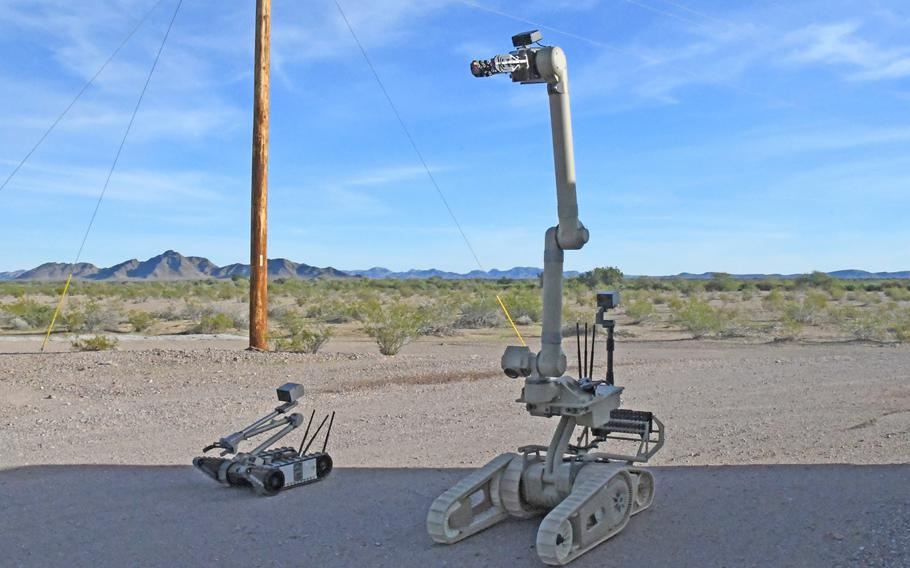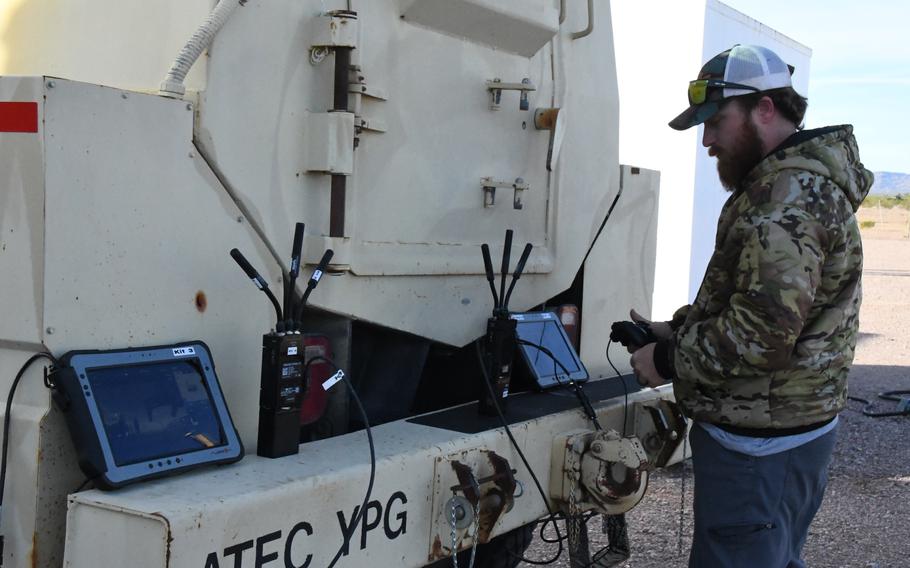
The Ammunition Recovery Technicians at Yuma Test Center, Ariz., all former military members who attended explosive ordnance disposal school, are called when there’s ordnance that needs recovery, removal and/or disposal. To make their mission as safe as possible the section recently purchased three robots: two Packbots 525, at left, and one Kobra. (Ana Henderson/U.S. Army)
Three new robots are helping the Ammunition Recovery Section at Yuma Test Center on the Army’s Yuma Proving Ground, Ariz., stay safer.
The section recently purchased two Packbots 525 and one Kobra to aid in recovery, removal and disposal of explosive ordnance, a Yuma Proving Ground news release announced.
The Packbot, the smaller of the two robots, can relay real-time audio, video and sensor data to an operator at safe distance and is controlled via a touchscreen-based tablet system, according to a fact sheet from manufacturer Teledyne FLIR. The Kobra can lift up to 330 pounds and reach up to 138 inches, according to Teledyne FLIR.
Each model has three or four cameras to provide different angles, and a camera that rotates back to serve as a backup camera, the release said.
Technicians with the section are all former military members who attended explosive ordnance disposal school, and the robots are the “Army standard” currently used in the field, a Yuma Proving Ground news release said.
“A lot of us used these in the military,” Ammunition Recovery Technician Brittan Forster said in the release. “At least the smaller one, the exact same one is utilized in the military so if you got out in the last five to ten years, nine times out of 10 you used that on a deployment or stateside training with your unit.”

Tablets are used to see what the robots’ 4k cameras are sending back and provide sharp color images. This is vital when looking for signs of arming, which include color of lights and parts out of place. Ammunition Recovery Technician Brittan Forster is pictured operating the robots. (Ana Henderson/U.S. Army)
Recovery teams can use tablets to view the high-definition color images from the robots’ cameras. The team lead is able to monitor the mission from another location and provide guidance if needed. The team has a Robot Operations Trailer that travels to test sites with a command center used to monitor the test site, according to the release.
“Each one of these will link to any one of robots, which is something new,” Ammunition Recovery Operations Chief Josh Laudermilk said. “The older robots had their individual systems, and they were big heavy and bulky. These are small easy to transport, ready to go.”
With these capabilities, the team can use the robots to lift items for inspection or to drag ammunition away to allow a safety buffer.
“We utilize the robots to move items to a safe disposal area, safe holding area, or remote disassembly area,” Laudermilk said. “We can also move explosive charges to the item and blow it in place if necessary.”